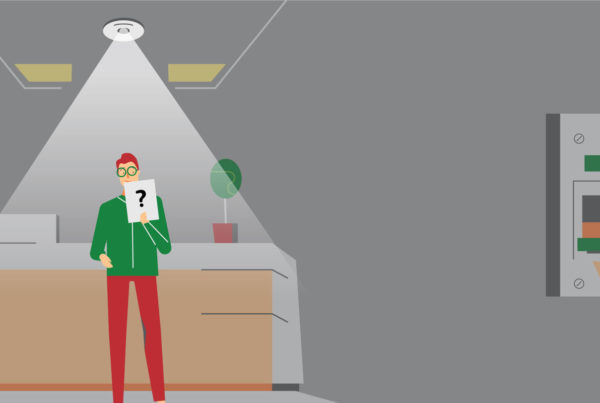As our aging population continues to grow, elder care and other long-term care facilities often struggle to provide the best possible care to patients and their families. The market is becoming more competitive, and demand for skilled carers is high, placing a greater onus on the facilities to provide service that is both reliable and excellent.
Technology, and the Internet of Things (IoT) in particular, provide care facilities with a valuable platform that will allow them to leverage tools to help them improve efficiency, quality of care, and the overall patient experience.
By introducing a smart building infrastructure (an IoT foundation) such as EMIoT, care facilities will have a platform from which to scale, become more agile, and access a range of benefits in every department.
What is smart building technology?
A smart building is any structure that leverages automated processes to provide data and control critical operations that include heating, cooling, ventilation, security, lighting, communications, and many other systems.
Smart building technology further helps by providing building managers with real-time data on system performance, helping to reduce operational costs while optimising energy use and reducing risk from end-to-end.
How does smart building technology work?
Using a network of microchips, sensors, and actuators, data is sent to a control centre, simplifying building management and helping humans make more efficient use of their time. A connected building helps them to monitor events remotely, allowing them to focus on higher-value tasks, such as providing quality care to residents.
How can the aged care sector utilise smart building tech and IoT?
In aged care facilities, there are many ways that IoT and smart building tech can support high-quality care.
From monitoring medical equipment to facilitating patient communication and telemedicine connections with medical providers, IoT is enabling flexible data flow throughout aged care facilities and transforming the way carers and building managers do their jobs.
With a marked increase in the aging population and a notable gap in skilled labour, the efficiencies that can be realised through IoT help care teams to maintain a high standard of service delivery without putting undue strain on resources.
For management, carers, residents, and the families of residents alike, there is a multitude of benefits.
Resident comfort can be better controlled, even at a macro level. For instance, areas that are in use can be heated and cooled as required when in use. Sensors can send data from medical devices to care teams, reducing the number of emergency responses, and improving the quality of patient life while maximising staff efficiency.
Lighting systems, including emergency lighting, can also be automated and controlled remotely, helping to improve emergency response while making the facility a safer place for staff and residents alike.
Transforming buildings into smart buildings with IoT and EMIoT
Digital transformation is necessary to take advantage of IoT, but once a platform is established, it can be built upon and scaled with ease. EMIoT is a network-based emergency and exit lighting system powered by the Internet of Things, but that is only the beginning.
Once established, EMIoT provides the foundation to build an IoT smart building ecosystem that can help predict maintenance needs, reduce energy consumption, and fortify the safety and security of the entire building.
According to a recently published study, the smart building market is predicted to top $33.7 billion US by 2023, representing an almost 30 percent increase since 2018.
Smart building technology has already transformed many industry sectors, including retail, manufacturing, logistics, and healthcare. By having access to detailed insights on building systems, asset tracking, and human capital management, companies of all sizes and scope have been able to realise significant improvements in efficiency that not only improve the bottom line but also assure customer satisfaction.
In conclusion, the positive impact of IoT on building operations and in aged care facilities in particular supports today’s needs and addresses the concerns we have for elder care in Australia. If you would like to learn more about EMIoT and how it can support you now and in the future, reach out today.





